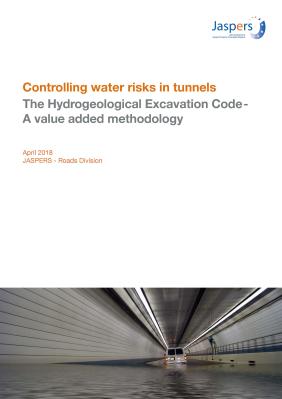
Description
By nature, tunnels interfere with surface and underground water flows. As soon as excavation begins, it starts to modify the hydrogeological set up and to attract water from aquifers. The risks of encountering water inrushes, infiltrations or leaks at some point in a tunnel’s lifetime are high.
Water in tunnels may put safety at risk and cause irreversible damages to the environment. Both the construction phases and the long-term operation of a tunnel may be disrupted, resulting in losses of time and reputation. Cost overruns can also be sizeable.
Assessing the hydrogeological situation at a very early stage in the project cycle is crucial, as is the systematic monitoring of water levels throughout a tunnel’s lifetime.
With this in mind, JASPERS has adapted a methodology called Hydrogeological Excavation Code (HEC), to help transport infrastructure authorities manage the hydrogeological risks in major underground projects.


